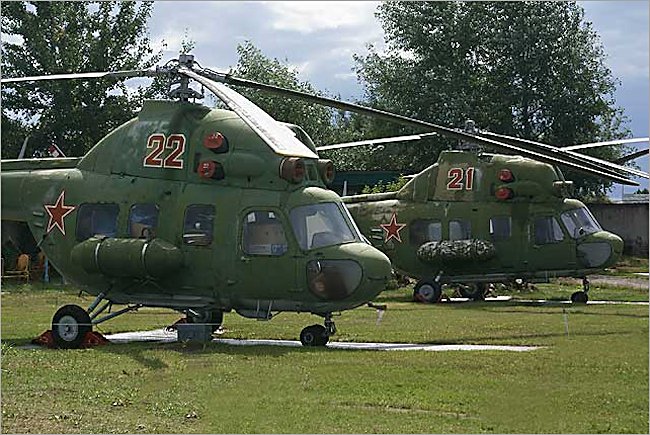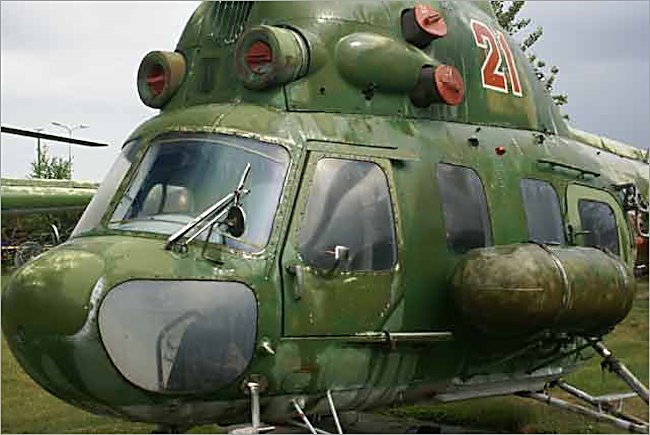Mil Mi-2 Hoplite Helicopter
The Mil Mi-2 Hoplite Air Support Helicopter had a maximum speed of 138mph (220 km/h). It had a service ceiling of 13,120 feet (4,000 m) with a range of 212 miles (340 km) The Mil Mi-2 Hoplite only needed a crew of one and could carry eight passengers. There are many variants of the Hoplite helicopter, some have been designed to lay aerial mines, chemical reconnaissance, smokescreen laying, aerial forward command post, ambulance, air sea rescue and anti-tank gunship.
It was lightly armored but was fitted with 23 mm autocannon, machine guns and/or two 57 mm rocket pods, four 9K11 Malyutka anti-tank missiles or Strela-2 AA missiles so it had quite a punch.

Photograph taken at the Russian Aircraft Museum next to Riga International Airport Latvia
As the Russian plants were fully occupied with production of the Mi-8 and other heavy helicopters in the Mil series, an agreement was reached with WSK-Swidnik to manufacture the Mi-2 in Poland, and they took over production and development rights in 1964. The first Polish Mi-2 had flown before this in November 1963.
It was first introduced into the Soviet Air Force in 1965. It is basically a turbine-powered development of the Mi-1 in which, by mounting two small shaft turbine engines above the fuselage, the entire cabin area can be made available for a payload. The Mi-2 is used by mainly former Soviet and Eastern Bloc countries, although it is used by Mexico and Myanmar as well.

Photograph taken at the Russian Aircraft Museum next to Riga International Airport Latvia
Most of armed Mi-2 variants were used by Poland. Some were also used by the East Germany (with machine gun and unguided rocket armament only).
North Korea still maintains a large active fleet of Mi-2s. In the event of a war with South Korea the primary mission of the 200+ aircraft would be the insertion of North Korean Special Forces behind enemy lines. These special forces would be tasked with opening the "second front" against the allied forces, in order to disrupt their ability to counter the North Korean invasion. The life-expectancy for the Mi-2s would be short, and many would likely not return from their initial mission.

Photograph taken at the Russian Aircraft Museum next to Riga International Airport Latvia
The Mi-2's other main application is in an agricultural role, for which it can carry a hopper on either side of the cabin containing 450kg of dry chemical or 500l of liquid; on non-agricultural Mi-2's these containers can be replaced by additional fuel tanks.